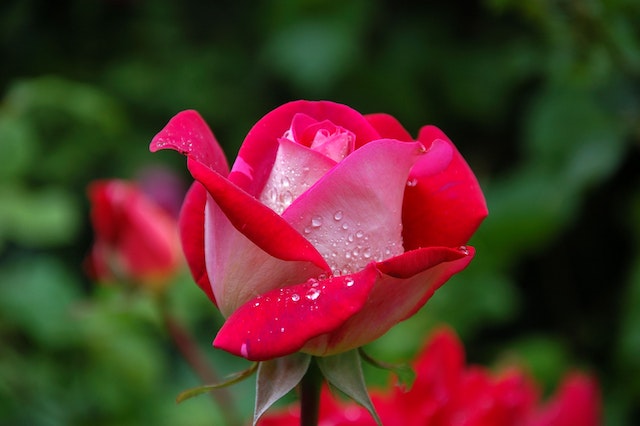Roses are lovely flowers. They come in all different sizes and shapes, hundreds of colors, and many different flower shapes and scents. Many flowers all summer long. In the garden, there is a rose for almost everything. Roses can be hard to grow, but gardeners love a challenge, especially those who grow roses. That’s why it’s so satisfying to grow roses in Colorado.
Basics of Pruning Roses
Pruning roses is a simple but important task that helps ensure healthy plants and bountiful blooms. To prune, first remove any dead or diseased wood, then cut back the canes by about one-third. Be sure to make your cuts at an angle so water will run off and not pool around the stem. Next, remove any crossing or rubbing canes, as well as any suckers (new growth) that are growing from the base of the plant. Finally, shape the shrub by pruning away any side shoots. Once you’re finished, water your roses well.
What is the Best Time to Plant Roses?
Roses are one of the most popular flowers in the world and can be grown in a variety of climates. The best time to plant roses depends on the type of rose and the climate in which you live. Most roses will bloom in spring or summer, so planting them in early spring is usually the best option. If you live in an area with a mild climate, you can plant roses year-round. Shrub roses are generally easier to care for than other types of roses and can tolerate colder temperatures, so they can be planted in late winter or early spring.
How to Choose Healthy Roses to Plant?
When purchasing roses, it is important to choose healthy specimens. Some factors to consider when selecting roses include: whether the rose is being sold as a bare root or in a pot, the size and health of the roots, the number of canes, and the overall appearance of the plant.
Bare root roses are typically less expensive than potted roses, but they require more care when planting. Be sure to select bare root roses that have healthy, white roots with no visible damage. The plant should also have at least three canes and show no signs of pests or disease.
Potted roses are a bit more expensive than bare root roses, but they are easier to care for. When choosing a potted rose, look for plants with healthy green leaves and strong stems. The roots should be growing densely in the pot and there should be no visible signs of pests or disease.
How to Plant, Grow, and Prune Roses
Roses are a beautiful and classic addition to any garden. Though they may require a bit more care than some other plants, the reward is definitely worth it! Here is what you need to know in order to plant, grow, and prune your own roses.
First, choose a location for your rose bush. Roses need plenty of sunlight and good air circulation in order to thrive. They should also be planted in nutrient-rich soil—compost and fertilizer will help give them a boost. Early spring is the best time to plant roses.
Once you have chosen a spot, it’s time to prepare the soil. Dig a hole that is about twice the size of the roots ball of your rose bush. Gently loosen the roots and place the bush in the hole. Backfill with soil and water well.
Now that your rose bush is planted, you will need to water it regularly—about once a week or more if there hasn’t been rain. Be sure not to overdo it, as too much water can actually be harmful to roses. They like moist but not soggy conditions.
Rose Pruning in Colorado
Rose pruning in Colorado is a necessary step to keeping your rose bushes healthy and ensuring that they bloom to their fullest potential. Pruning roses helps to encourage new growth, remove dead or diseased canes, and improve the overall shape of the bush. Fertilizing and watering regularly will also help roses in Colorado to thrive. Hybrid tea roses and shrub roses are the most popular varieties of rose bushes in the state, but climbing roses and root system roses are also grown.
Give Your Rose the Right Home
A rose needs the right home in order to thrive. The home should have well-drained soil and full sun. The rose should also be planted in a location where it will not be crowded by other plants.
Tips for Planting in Zones

